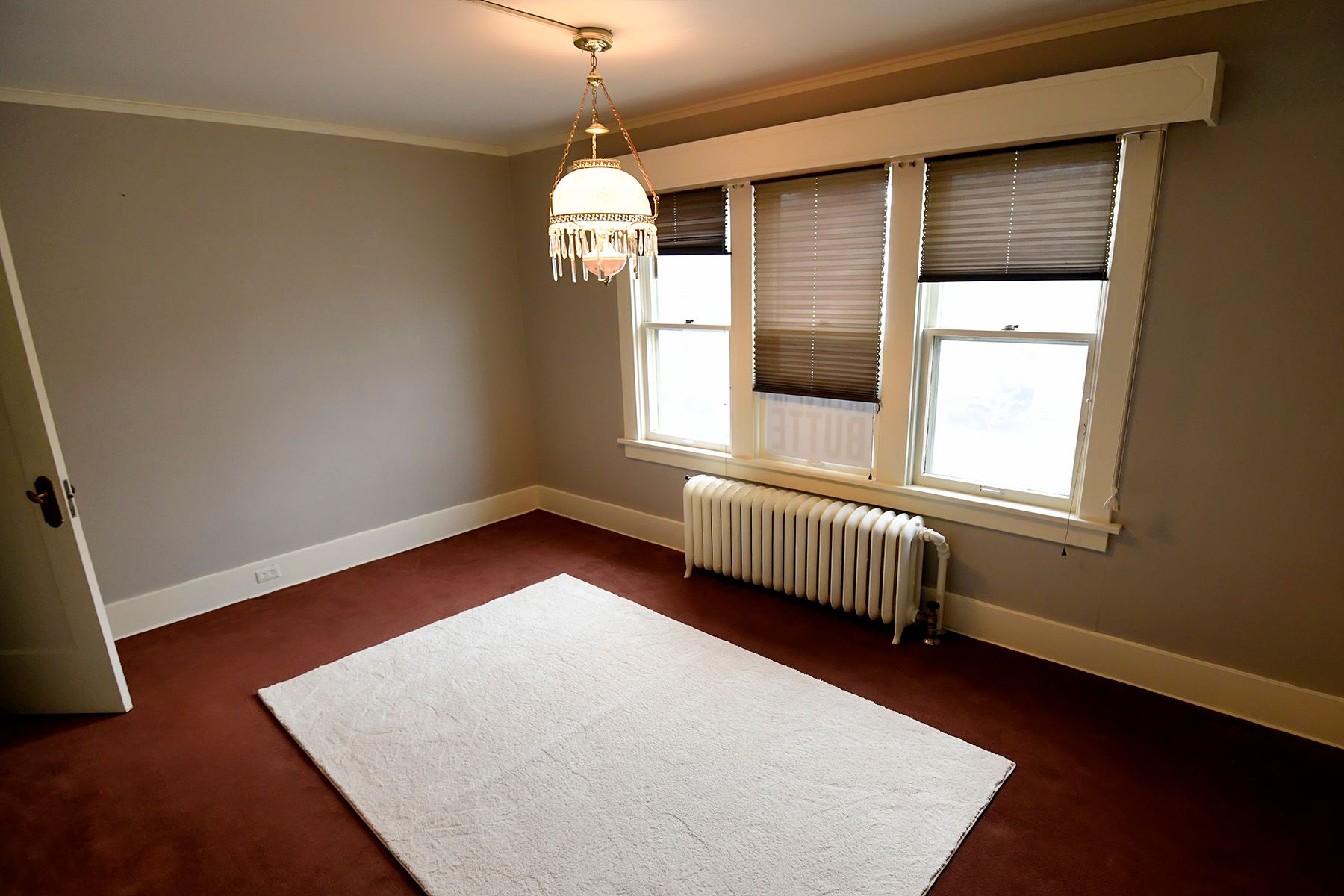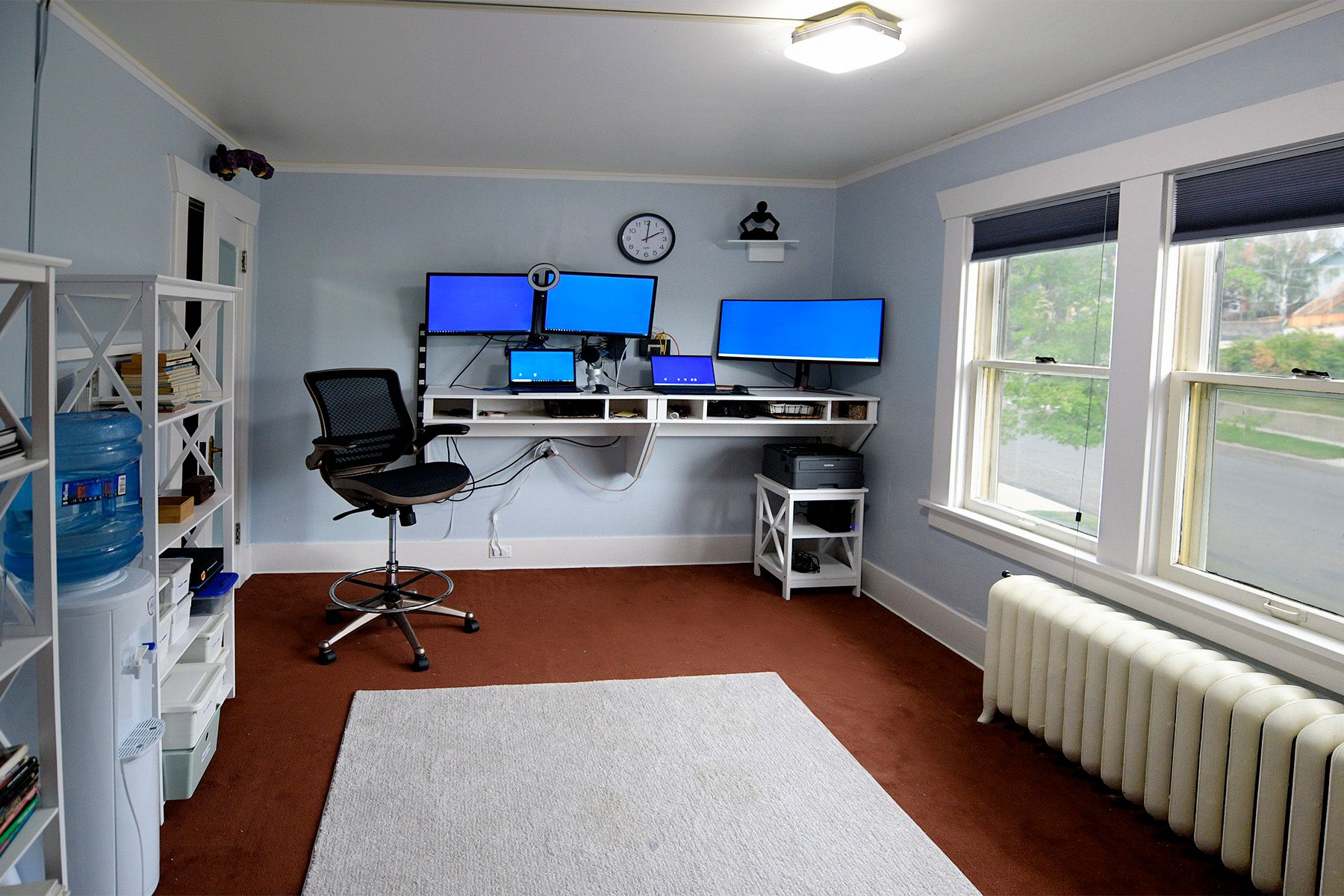Home Office
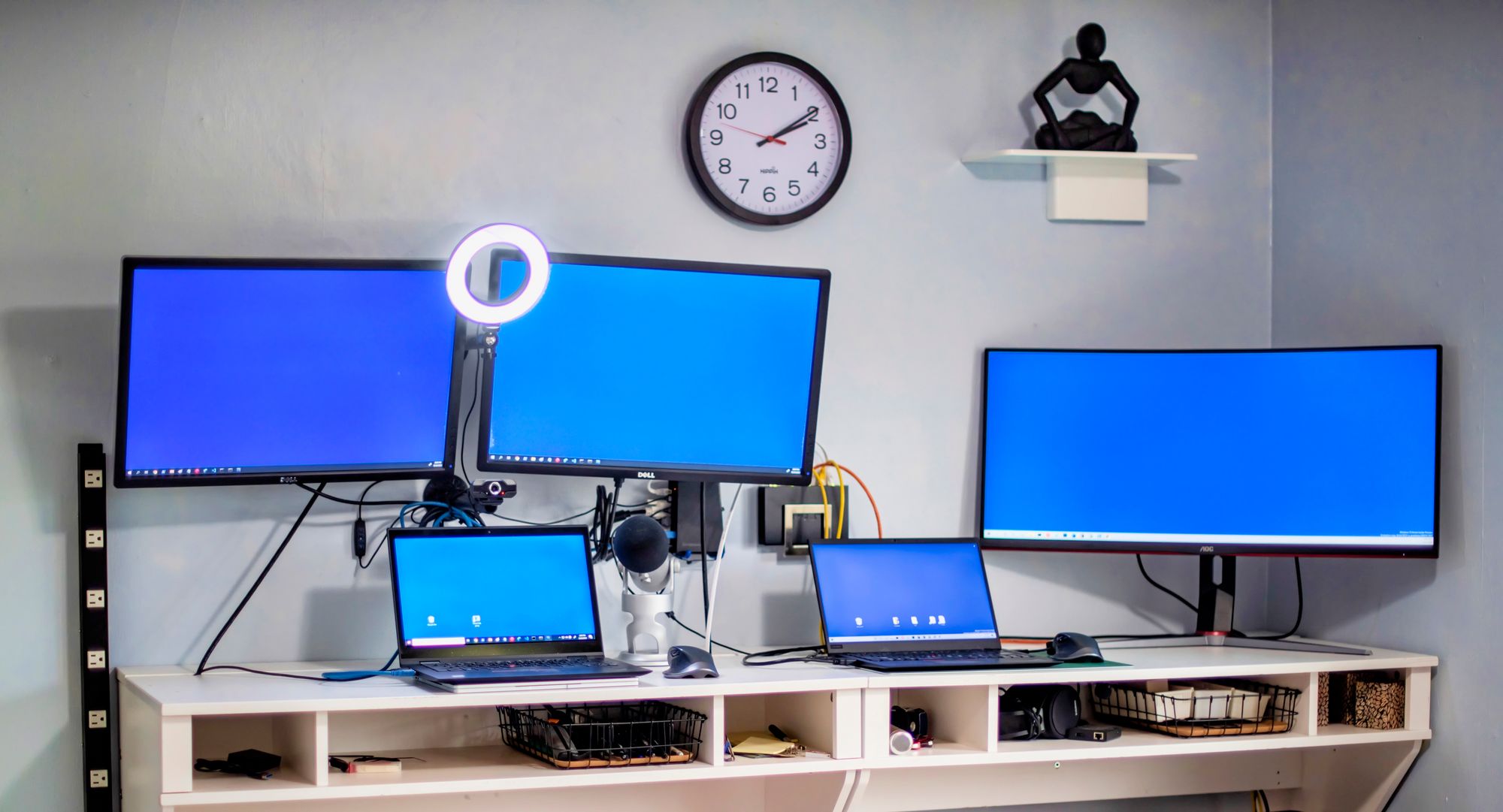
I've had many home offices, and this year I had the opportunity to set up a new one from scratch. It's not yet 100% done, but it's already my favorite home office I've ever had, and in this post I'll go over a few of the details of what I like about it and why.
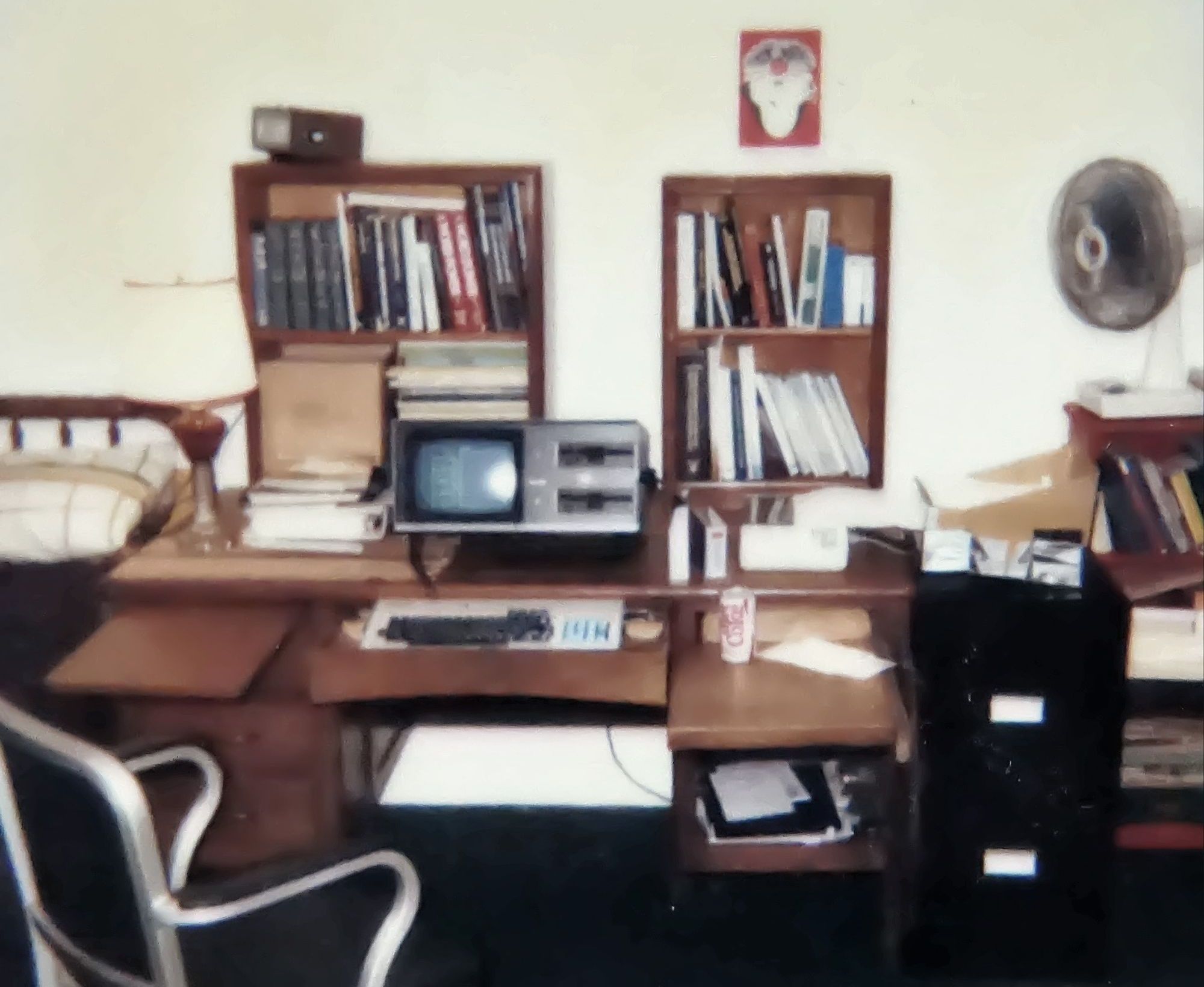
Planning for the long term
"Live as if you were to die tomorrow, learn as if you were to live forever."
- Mahatma Gandhi
I've thought of Lê Đức Thọ many times while setting up my home office.
The Paris peace talks began in the spring of 1968. Henry Kissinger, a connoisseur of fine food and fancy hotels, expected negotiations to last a few weeks. As US delegate John Negroponte said in a 1997 interview, "We all went and stayed in hotel rooms rather than renting apartments or finding other kinds of long-term accommodation. It didn't occur to any of us at the time that five or six years later there would still be a delegation in Paris still going over very much of the same ground."
Lê Đức Tho, the head of the North Vietnamese delegation, had a different approach. As a young man, he had been imprisoned for years in brutal French Indochina prisons, where he taught himself French and English so that he could more effectively advocate for Vietnamese nationalism when he got out. In keeping with that sort of long-term thinking, Lê Đức Tho's Vietnamese delegation signed leases on comfortable suburban apartments when they arrived in Paris.
Negotiations dragged on far longer than anyone – with the likely exception of Lê Đức Tho – had anticipated. After five years of the US delegation living out of hotels like business travelers, the agreement that led to the short-lived Paris Peace Accords was signed in January 1973.
When we moved in to our current house in April of 2020, some people expected the COVID-19 lockdown to be an inconvenience of a few weeks. But as I write this post in September 2020, my employer (Google) has said the earliest we'll need to be back in the office is next July. And I think there's a pretty good chance it's going to be even longer than that, given the level of dysfunction in the US response to the virus. So at every turn, I've been thinking about what I would want in an office to make it a place I'll enjoy working from for a long time.
Location, location, location
Windows and views are nice, but I hate dealing with the glare and reflections of sun shining directly into my office. In other words, the ideal location would be a room with a view, on the north side of the house. I'm lucky to have such an option in our current house.
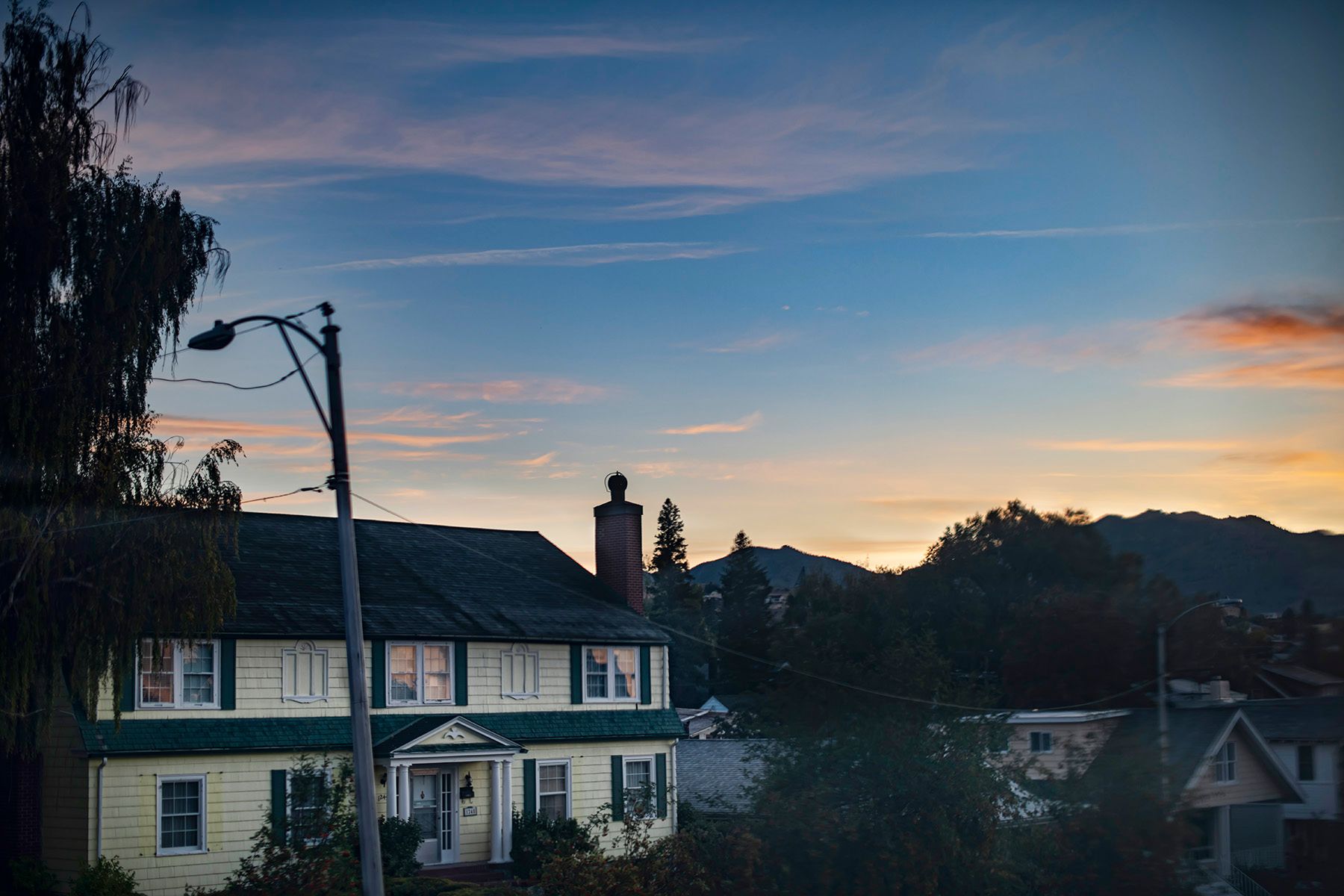
Internet connection
If you've ever been on a call with a coworker whose audio or video is flaky, it's pretty much a given that they were on wifi. Wifi can be handy, but it can be flaky, too. For that reason, I prefer to avoid wifi whenever possible. (Apparently I'm not the only one.)
I've run a wired internet connections from our router to my office, and I also ran one to Megan's office. We have Spectrum's "1GB" service, which is advertised as providing 940 mbps download speed, although I've never actually measured it at much more than 400 mbps. But that's still super fast, so I'm happy with it. (I used flat Cat7 cable everywhere, and I suppose Cat8 might have helped a bit.)
Our Spectrum router is near the back of the house, far away from my office and on the floor below. I ran a flat Cat7 cable from there to an inexpensive D-Link Ethernet Switch in my office, and then connected all of my devices to the switch. Drilling through lathe and plaster walls from 1917 was an interesting new experience, and going between floors required some creative routing in a couple of spots, but now that it's done I have a fast, reliable internet connection.
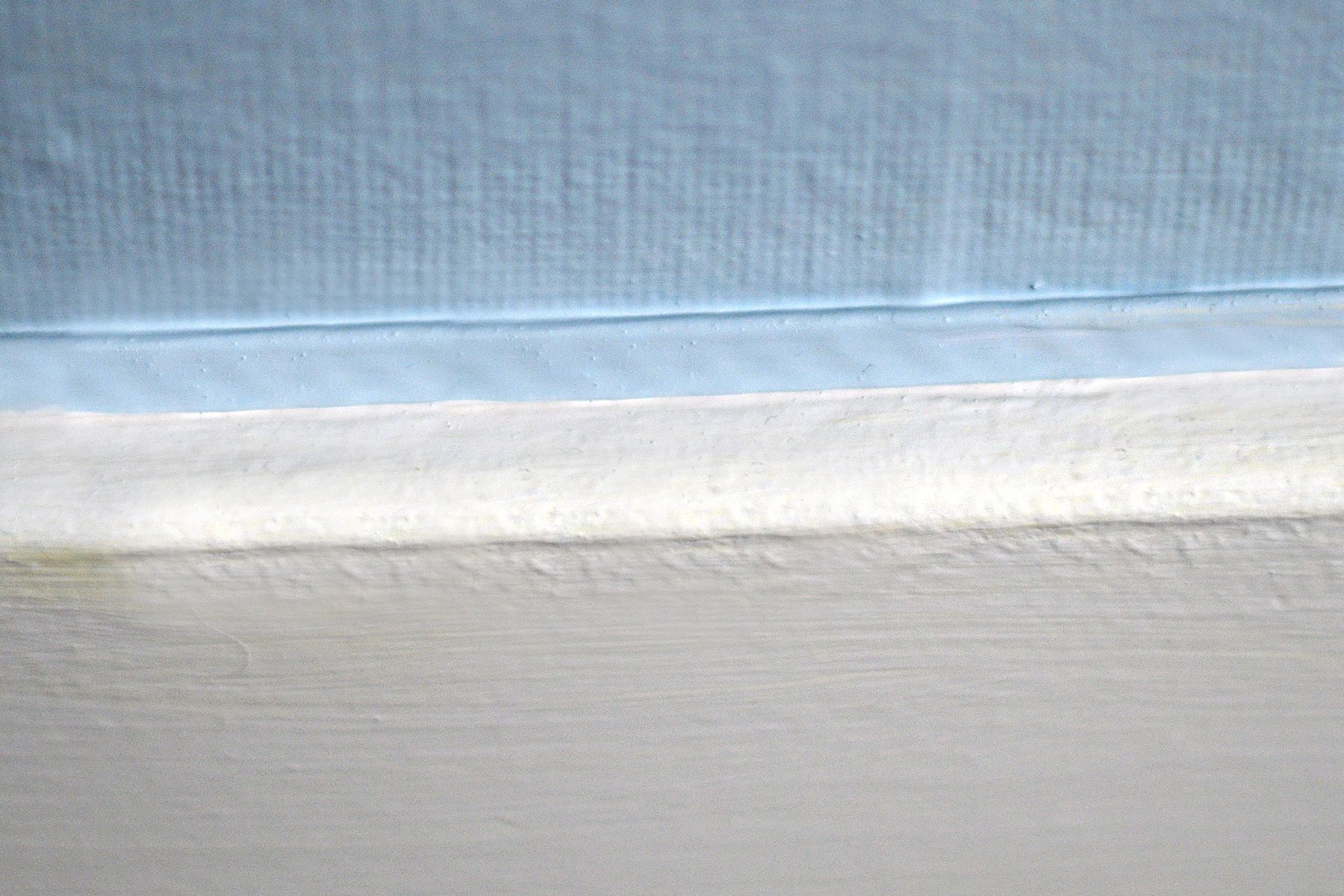
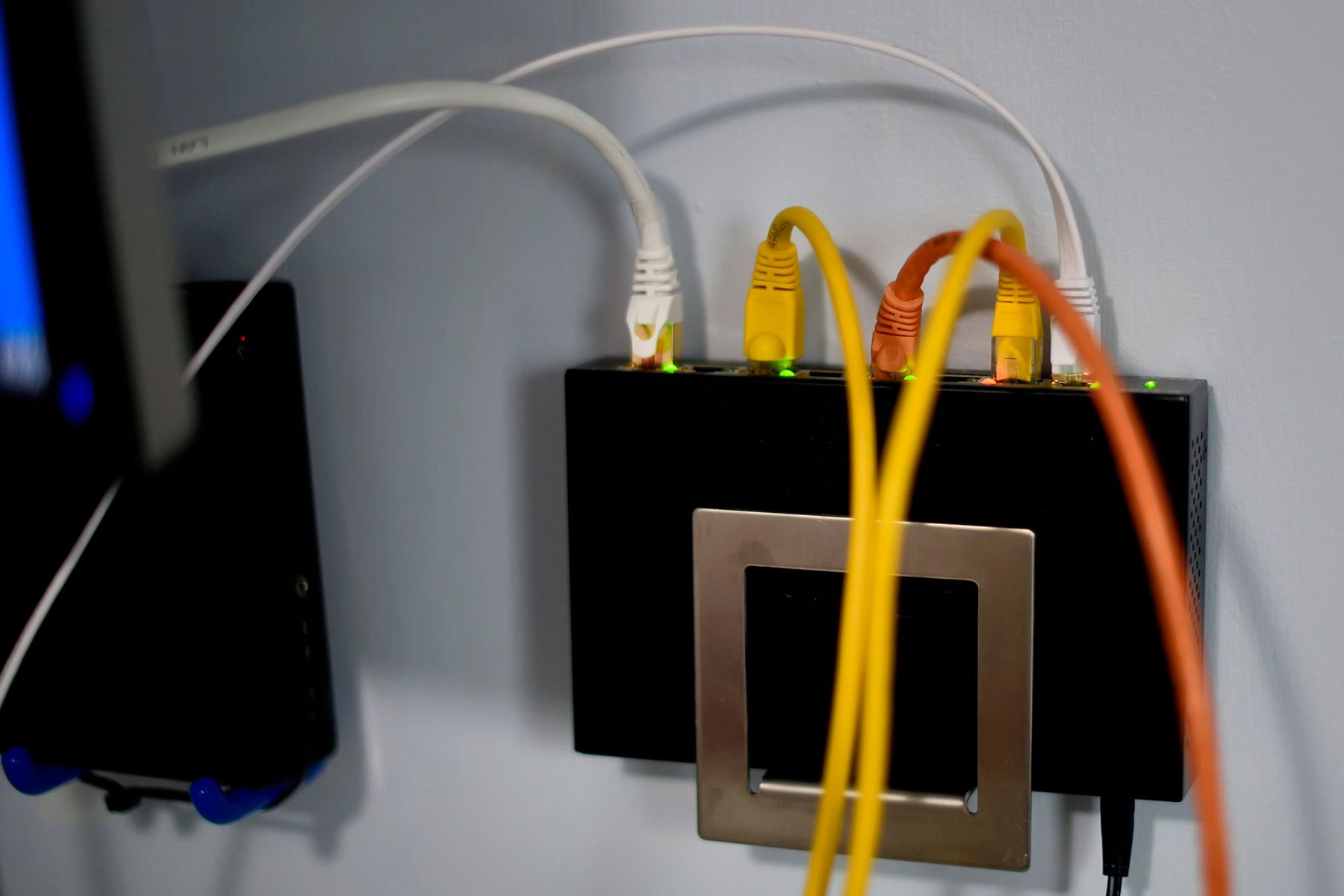
Desk and chair
My desk is actually two Prepac wall-mounted Designer Floating Desks mounted side by side, which gives me plenty of room for two laptops with all the trimmings. These desks have open slots instead of drawers, which I prefer because it's easy to look through the contents of everything in a single glance.
I like to stand sometimes but never for more than 20 or 30 minutes, and after years of experimentation, I've settled on a 43 inch surface height. So I needed a tall chair, and I went with a Flash Furniture Drafting Chair. It was relatively inexpensive (a little over $200), and I find it comfortable. It doesn't slowly slide down to a lower height, even with a big guy like me hopping on and off it all day.
Getting the light right
One of the things I struggled with in getting my office set up was the lighting for video calls. There was a big chandelier in the room when we moved in (see the "before" photo near the end of this post), and the light from it was very warm (reddish-orange). So I swapped out the chandelier for a more flush fixture and some 500K daylight bulbs. That helped some, but my skin still had a deathly orange tint to it on videos. Next, I repainted the walls a light blue-gray and all of the trim bright white. That got my skin tone pretty close to normal, but the backlight from the windows made my face too dark because of the shadows.
To compensate for the backlit shadows, I mounted a Gemwon 6-inch ring light above my work laptop, with a white filter. That gave me the look I wanted, as shown below with and without the Google Meet "blur background" feature.

Putting it all together
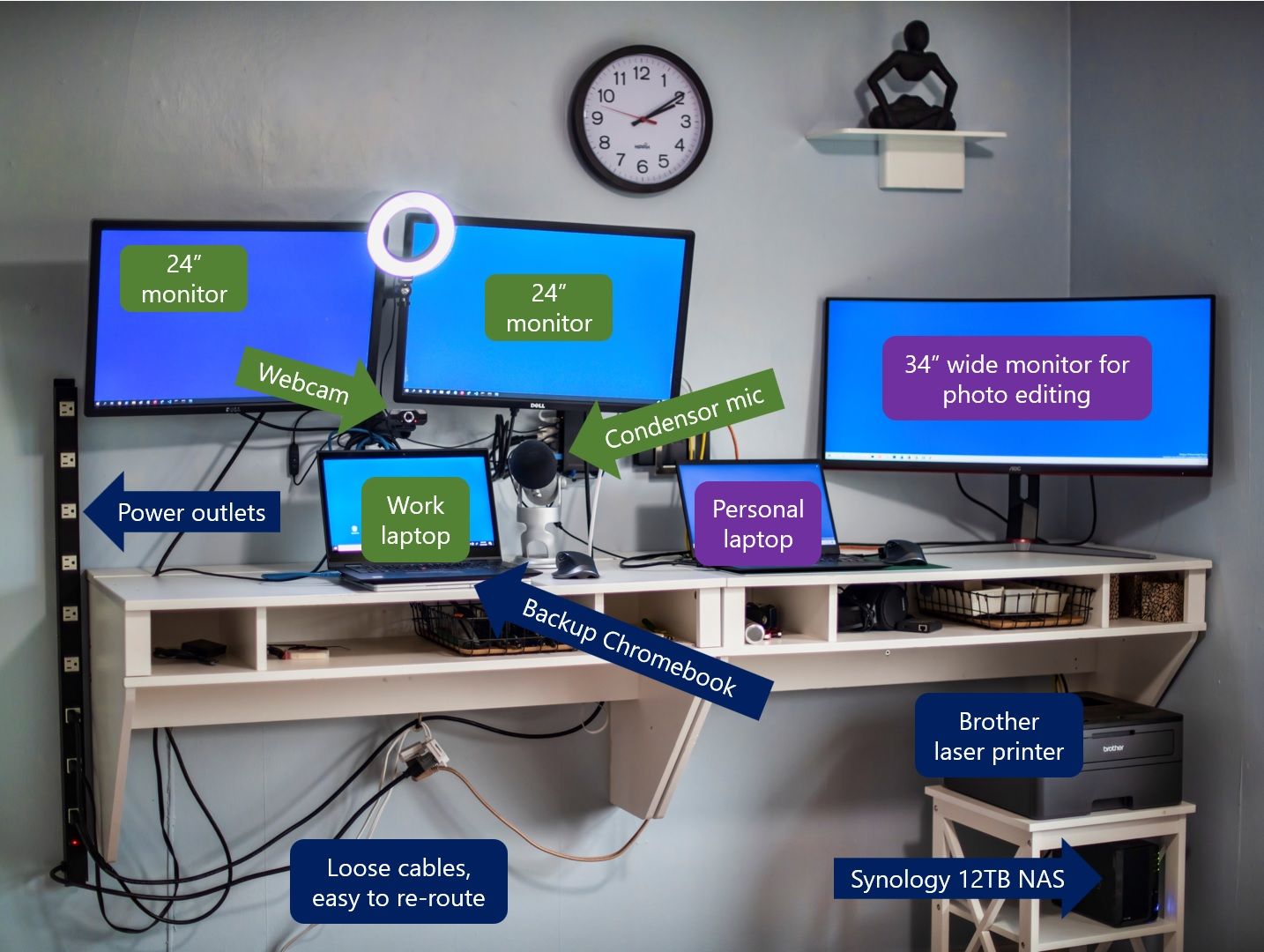
First, note the items labeled in green. Those are all connected to a Lenovo Thinkpad USB 3.0 Docking Station, which is mounted on the wall behind the 24" monitor on the right. So when I set my work laptop down in that spot, I just plug in a USB cable from the docking station and all of those devices are connected. I rarely do video calls from my personal laptop, but when I do I can simply swap the two laptops to use the mic, webcam and dual monitors with either laptop.
Underneath my work laptop, I have a Chromebook that's configured for work, has an active security key, and is ready to use if my work laptop were to fail.
My personal laptop is on the right, with a 34" wide curved monitor attached via an HDMI cable. I like editing photos in Photoshop (something I've done almost every day for the last 20 years) on a wide monitor, and I often put two apps side by side on that monitor as well.
It's not called out on that diagram, but you'll notice there's a mouse to the right of each of the laptops. Those are the Logitech MX Master 2S wireless model, which I love because they work great on everything from glass surfaces to blue jeans. They three Bluetooth channels, so I have both of my mice configured to use connection #1 connect with the personal laptop, connection #2 with the Chromebook, and connection #3 with the work laptop. I can grab either mouse and any machine, and take it anywhere in the house and they'll work fine together.
In the lower right, you'll see my laser printer, the Brother HLL2370DW, and my 12TB Synology NAS. They're on my local Spectrum network, so they're accessible from anywhere in the house on wifi, in addition to from my wired connections here in the office.
On the left in that diagram, you'll see a power strip. It's handy to have those outlets nearby if I want to plug in a charger for some device, and there are also 6-outlet power strips hidden inside the back of each of the wall-mounted Prepac desks. That's where the computers and monitors get their power, which leaves most of the wall-mounted outlet strip available. By the way, the wall outlets down below aren't grounded, and that's one of the numerous things we plan to upgrade in this old house, eventually.
Finally, note the "loose cables, easy to re-route" label near the power cords below the desk. I feel like I've evolved over the 36 years since my first home office shown at the beginning of this post, and have come full circle. At first, I just tried to have a functional office, and didn't do much to hide cables. Then for quite a few years I become obsessive about cable management and spent a lot of time and energy hiding cables and tidying up and making everything look so nice.
But that made change hard to deal with: moving a piece of equipment or adding something new could turn into a time-consuming task, due to all the cable management details. So in my new office, I've gone back to the "function over form" approach. These days, I care more about ease of reconfiguration than cable tidiness.
Here's an example of that approach. My desk is about 80 feet from our internet router (going through three walls and a ceiling), so I picked up a 100 foot Jado Cat7 Ethernet cable and ran that to the switch in my office, rather than making a custom cable of exactly the right length. I have 20 feet of excess cable coiled up inside the back of my desk, and if I ever want to move my wall-mounted Ethernet switch I can do so in minutes, rather than hours.
It can be interesting and satisfying to make your own cables to precise lengths at first (such power!), but after the first few hundred or few thousand cables it gets boring. I reached that point before Bill Clinton become President (IPX/SPX cables for Novell networks, mostly, as well as lots of phone lines that I ran to modems for clients in the 80s), and I aspire to never make a custom cable again. To each their own.
"Your first 10,000 photos are your worst."
- Henri Cartier-Bresson
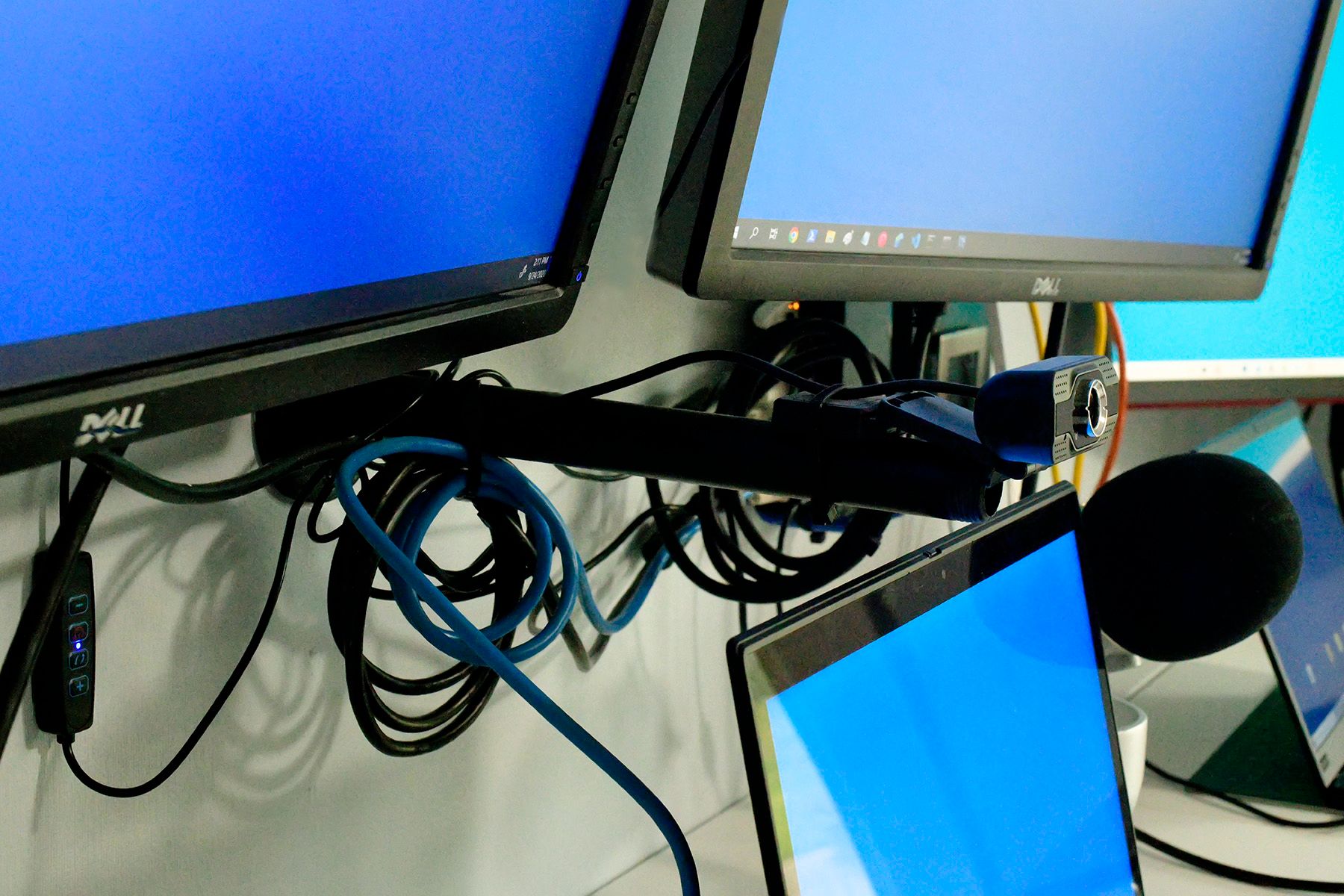
By the way, keen observers will note that both of those laptops are Lenovo Thinkpads. I've owned multiple Thinkpads myself, had several Microsoft-issued Thinkpads when I worked there, and was thrilled to find that Google would provide me with a Thinkpad as a work laptop. You're entitled to your own opinion, but mine is that the Lenovo Thinkpad keyboard is the absolute pinnacle of tactile feedback in keyboard design. Merely typing those words on a Lenovo Thinkpad keyboard just now made me want to go write something longer.
That's my home office setup!
